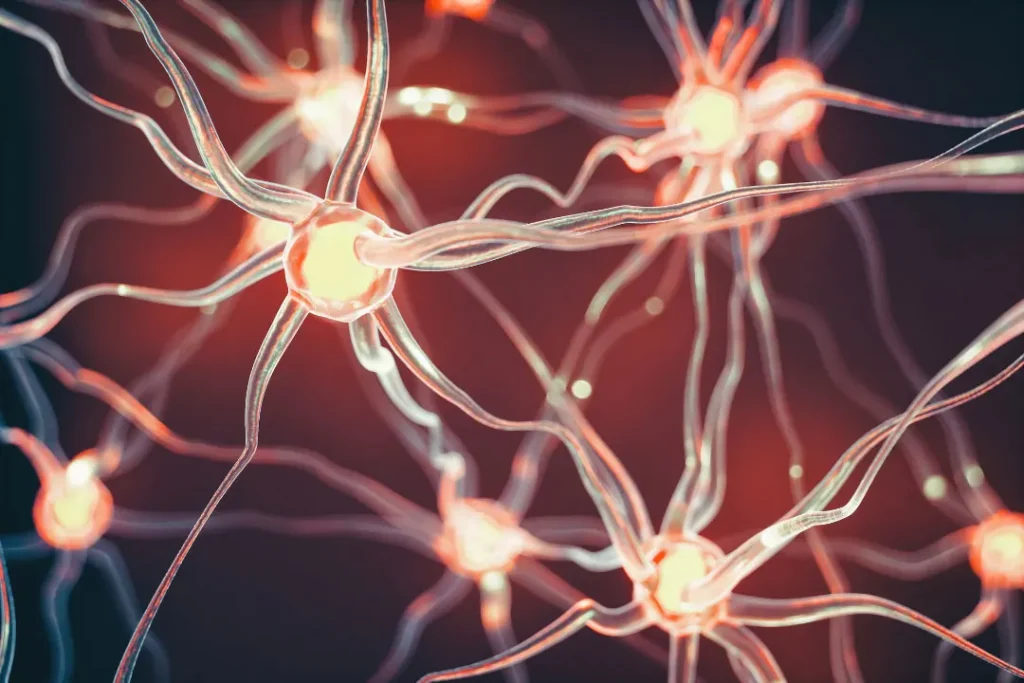Capsicum, sometimes known as chili pepper, is a member of the Solanaceae family and has an extensive history of usage in both cooking and medicine worldwide. There are several Capsicum species that are renowned and utilized around the world, including Capsicum annuum, Capsicum frutescens, and Capsicum chinense. The biochemical components of capsicum, possible health advantages, adverse effects, interactions with other drugs, and suggested dose levels are presented to you and will be covered in this article.
You May Also Like:
Should You Try CBD for Focus? Here Are the Facts.
Sunmed CBD vs. Partnered Process CBD: Finding the Best CBD for Sleep
Nature of Capsicum
Worldwide, cultivators grow Capsicum annuum, Capsicum frutescens, and Capsicum chinense, among other species. Due to their taste and pungency, the fruits of the Capsicum plant are utilized in food preparations. The bioactive substances found in capsicum, however, are what have been mostly capturing scientific interest.
The main capsaicinoid found in Capsicum, capsaicin, is primarily responsible for the spicy, pungent flavor that chili peppers are known for. The substance, an alkaloid, has an amide formed from vanillylamine and 8-methyl-6-nonenyl acid in its structure. Flavonoids, carotenoids, vitamins, and essential oils are just a few of the several other phytochemicals found in capsicum, all of which contribute to the variety of possible health advantages.

Health Benefits of Capsicum
Continuing, the TRPV1 (transient receptor potential vanilloid 1) agonist function of capsaicin is the basis for many of the health advantages of capsicum. The non-selective cation channel TRPV1 plays a role in both the feeling of pain and the body’s reaction to heat. Capsaicin’s usage in topical creams for diseases including postherpetic neuralgia and osteoarthritis is based on its activation of TRPV1, which desensitizesnociceptiveneurons, producing an analgesic effect.
In addition to its analgesic effects, capsicum may be advantageous for metabolic health. Due to TRPV1’s function in controlling energy balance, research shows capsaicin may help with weight management by enhancing thermogenesis and lipid metabolism. Similar to how capsaicin may help with glycemic management, it may be advantageous for those with type 2 diabetes.
Antioxidants found in capsicum, such capsanthin, may potentially have a positive impact on health. As damaging free radicals are neutralized by antioxidants, oxidative stress is decreased, which may lessen the chance of developing chronic illnesses like cancer and heart disease.

Chemical Composition of Capsicum
The powerful bioactive molecules found in capsicum are mostly produced from alkaloids referred to as capsaicinoids, such as capsaicin. Capsaicin is an amide of vanillylamine and 8-methyl-6-nonenyl acid structurally, and because of its alkyl and aromatic sections, it has both hydrophobic and hydrophilic qualities.
Other important phytochemicals are found in capsicum include flavonoids, carotenoids (such as capsanthin and capsorubin), vitamins (especially Vitamin C), and essential oils. These ingredients help explain the vast range of hues seen in Capsicum species as well as their distinct boons to your health.

Physiological Mechanisms of Action of Capsicum
The effects of capsaicin on the transient receptor potential vanilloid 1 (TRPV1) receptor are largely responsible for capsicum’s beneficial effects on health. A person’s sense of pain and heat is mediated by the non-selective cation channel TRPV1 that is expressed in nociceptive neurons.
The TRPV1 receptor is activated by capsaicin, which causes a rapid influx of cations, mostly calcium, into this type of neuron. Initial discomfort or heat sensations are brought on by this inflow. Capsaicin’s analgesic effects are based on TRPV1 desensitization, which happens as a consequence of repeated exposure to the compound and results in hyposensitivity to ensuing pain or heat stimuli.
Capsicum, and especially capsaicin, have tremendous potential as natural therapeutic agents in the treatment of numerous health disorders. To completely understand the many effects of capsicum on human physiology and to maximize its application in clinical and nutritional contexts, relevant scientists must conduct more study as is necessary.

Optimal Dosage
The ideal Capsicum dose changes based on the form and intent of usage by its consumer. You may use topical capsaicin products three to four times per day that contain a 0.025% to 0.1% capsaicin concentration. Users normally consume 30-120mg of a capsaicin supplement orally each day.
When ingested in moderation, capsicum is often safe for the majority of people. However, some people may develop adverse reactions, mostly gastrointestinal in nature, including nausea, diarrhea, and stomach cramps. Capsicum product application may produce burning, itching, and skin irritation when used topically. It is advised that those with a history of digestive issues, women who are pregnant or nursing, and kids use care while consuming capsicum.

Side Effects of Capsicum
Even while capsicum has a lot of potential health advantages, its consumers might experience unfavorable consequences. These are often minor and go away on their own, but under some conditions, they might develop into major problems.
- Digestive Problems: Consuming capsicum orally may cause gastrointestinal discomfort, such as nausea, diarrhea, and cramping in the stomach. These effects are often dosage-dependent and may be lessened or eliminated by lowering the dose.
- Skin Irritation: Capsicum may produce skin irritation when administered topically, which is characterized by burning, itching, and redness. With larger concentrations or in those persons with sensitive skin, this is more probable. This impact may be reduced by using lesser quantities or by testing a little quantity on a patch of skin prior to complete application.
- Irritation of the eyes and mucous membranes: Capsicum irritates the eyes and mucous membranes. Sneezing, coughing, and eye burning and watering may all result from direct touch and/or contact.
- Allergic Reactions: Even though they are uncommon, some people might develop allergies to capsicum. Breathing difficulties, hives, swelling of the face or neck, and extreme vertigo are among symptoms that might occur. These symptoms are signs of a medical emergency that have to be handled with urgency.
As with any supplement, if serious or alarming adverse effects appear, discontinue usage and speak with a healthcare provider.
Potential Substance Interactions
There might be drug interactions with capsicum. Theoretically, capsaicin’s impact on TRPV1 might enhance the hypotensive effects of antihypertensive medications. Given that capsaicin may have antiplatelet action, using it along with antiplatelet or anticoagulant drugs may raise the risk of bleeding and clotting difficulties.
Furthermore, the effects of capsicum on cytochrome P450 enzymes, which are important for drug metabolism, may have an influence on how well medicines are digested. Therefore, before beginning Capsicum supplements, especially for those using chronic drugs, it is imperative to speak with a healthcare expert.
Responsible and Optimal Use of Capsicum
Here’s a roundup of some previously presented information with the intention to keep you safe. Keep in mind the following factors to guarantee the best and safest usage of capsicum:
- Appropriate dose: For oral ingestion, usually in the form of a supplement, the recommended daily dose of capsaicin for most individuals is between 30-120 mg. Topical treatments may be used three to four times per day and typically have a 0.025% to 0.1% capsaicin dosage. It’s crucial for your personal safety to adhere to a product’s use and dosage guidelines.
- Personal Health Status: Some people should use care while using capsicum, including individuals who have gastrointestinal conditions, women who are pregnant or nursing, and kids.
- Potential Drug Interactions: Certain pharmaceuticals, including antihypertensives, antiplatelet agents, anticoagulants, and drugs metabolized by the cytochrome P450 system, may interact with capsicum. Always talk to a healthcare provider about possible medication interactions.
- Product Quality: Not all supplements containing capsicum are made equal. Look for products that have undergone independent testing for potency and purity, and that have been made in accordance with manufacturing procedures that abide to industry standards.
- Use moderation: More isn’t always better when it comes to supplements. Consuming large doses of capsicum, particularly for extended periods of time, might have unfavorable side effects and perhaps severe health implications.
By taking into account these elements, people may optimize the health advantages of capsicum while lowering possible hazards, making it an important contribution to a balanced, healthy lifestyle.
Capsicum:
Conclusion
For some people, spicy foods are just a delicious component to cuisine. For others, they know that ingesting Capsicum, the ingredient that gives peppers their flavor and aroma, is a choice that could boost the potential to improve health. Capsicum is a supplement that you can try when making healthy lifestyle choices. Please consider your individual health condition and be in conversation with your trusted health care provider(s) when considering adding any new substance to your dietary regimen. After research, you may choose to not ingest capsicum, but instead to use a product to be applied topically to the skin as the way you prefer to integrate Capsicum into your lifestyle.
References:
- “Unravelling the Mystery of Capsaicin: A Tool to Understand and Treat Pain.” Retrieved from: https://www.ncbi.nlm.nih.gov/pmc/articles/PMC3462993/
- “The role of bioactive components found in peppers.” Retrieved from: https://www.sciencedirect.com/science/article/abs/pii/S0924224419307083
- “The Capsicum (2n = 24) encompasses a diverse group of plants producing pungent or non-pungent fruits.” Retrieved from: https://www.sciencedirect.com/topics/agricultural-and-biological-sciences/capsicum
Important Note: The information contained in this article is for general informational purposes only, and should not be construed as health or medical advice, nor is it intended to diagnose, prevent, treat, or cure any disease or health condition. Before embarking on any diet, fitness regimen, or program of nutritional supplementation, it is advisable to consult your healthcare professional in order to determine its safety and probable efficacy in terms of your individual state of health.
Regarding Nutritional Supplements Or Other Non-Prescription Health Products: If any nutritional supplements or other non-prescription health products are mentioned in the foregoing article, any claims or statements made about them have not been evaluated by the U.S. Food and Drug Administration, and such nutritional supplements or other health products are not intended to diagnose, treat, cure, or prevent any disease.


